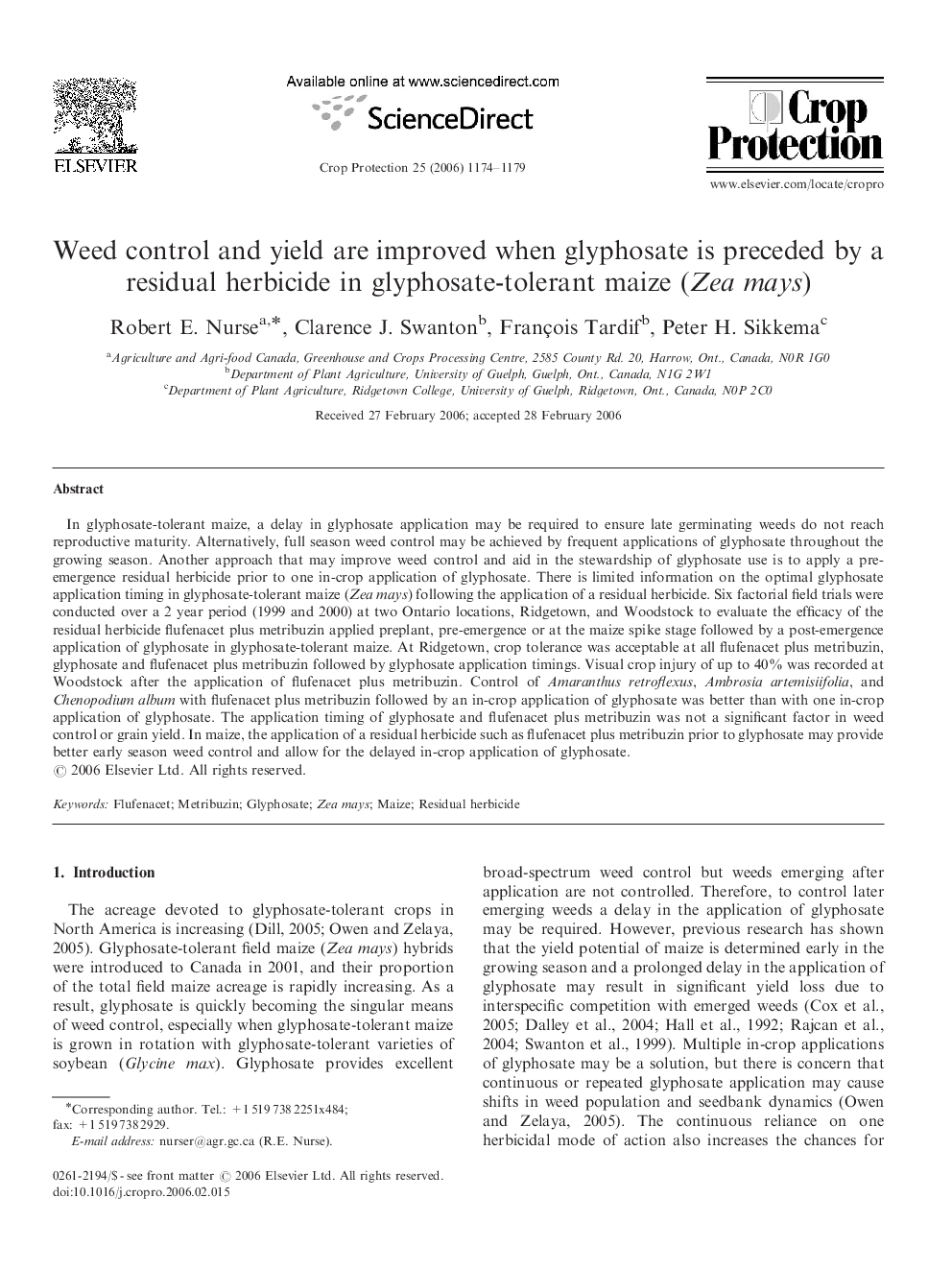| Article ID | Journal | Published Year | Pages | File Type |
|---|---|---|---|---|
| 4507869 | Crop Protection | 2006 | 6 Pages |
In glyphosate-tolerant maize, a delay in glyphosate application may be required to ensure late germinating weeds do not reach reproductive maturity. Alternatively, full season weed control may be achieved by frequent applications of glyphosate throughout the growing season. Another approach that may improve weed control and aid in the stewardship of glyphosate use is to apply a pre-emergence residual herbicide prior to one in-crop application of glyphosate. There is limited information on the optimal glyphosate application timing in glyphosate-tolerant maize (Zea mays) following the application of a residual herbicide. Six factorial field trials were conducted over a 2 year period (1999 and 2000) at two Ontario locations, Ridgetown, and Woodstock to evaluate the efficacy of the residual herbicide flufenacet plus metribuzin applied preplant, pre-emergence or at the maize spike stage followed by a post-emergence application of glyphosate in glyphosate-tolerant maize. At Ridgetown, crop tolerance was acceptable at all flufenacet plus metribuzin, glyphosate and flufenacet plus metribuzin followed by glyphosate application timings. Visual crop injury of up to 40% was recorded at Woodstock after the application of flufenacet plus metribuzin. Control of Amaranthus retroflexus, Ambrosia artemisiifolia, and Chenopodium album with flufenacet plus metribuzin followed by an in-crop application of glyphosate was better than with one in-crop application of glyphosate. The application timing of glyphosate and flufenacet plus metribuzin was not a significant factor in weed control or grain yield. In maize, the application of a residual herbicide such as flufenacet plus metribuzin prior to glyphosate may provide better early season weed control and allow for the delayed in-crop application of glyphosate.
